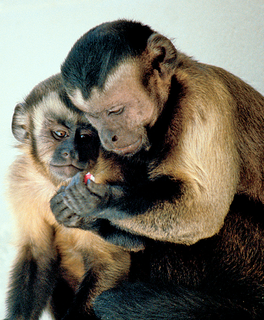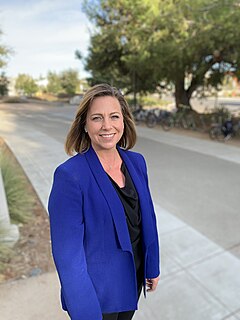
A veterinarian (vet), also known as a veterinary surgeon or veterinary physician, is a medical professional who practices veterinary medicine. They manage a wide range of health conditions and injuries in non-human animals. Along with this, vets also play a role in animal reproduction, animal health management, conservation, husbandry and breeding and preventive medicine like animal nutrition, vaccination and parasitic control as well as biosecurity and zoonotic disease surveillance and prevention.
The Ontario Veterinary College (OVC) is the oldest veterinary school in Canada. It is located on the campus of the University of Guelph in Guelph, Ontario. The OVC is one of five veterinary schools that offer the Doctor of Veterinary Medicine, DVM program in Canada. The program is highly competitive and only admits a select number of applicants each year. The OVC was ranked 1st in Canada and 5th in the world for veterinary medicine by the QS World University Rankings 2020.

The Toronto Zoo is a zoo located in Toronto, Ontario, Canada. Encompassing 287 hectares, the Toronto Zoo is the largest zoo in Canada. It is divided into seven zoogeographic regions: Indo-Malaya, Africa, Americas, Tundra Trek, Australasia, Eurasia, and the Canadian Domain. Some animals are displayed indoors in pavilions and outdoors in what would be their naturalistic environments, with viewing at many levels. It also has areas such as the Kids Zoo, Waterside Theatre, and Splash Island. It has one of the most taxonomically diverse collection of animals on display of any zoo worldwide; it is currently home to over 5,000 animals representing over 500 species. The zoo is open to the public every day of the year except December 25.

The Association ofZoos theAquariums (AZA), originally
the American Association of Zoological Parks and Aquariums, is an American 501(c)(3)

The Cleveland Metroparks Zoo aka Cleveland Zoological Park is a 183-acre (74 ha) zoo in Cleveland, Ohio. The Zoo is divided into several areas: Australian Adventure; African Savanna; Northern Wilderness Trek, The Primate, Cat & Aquatics Building, Waterfowl Lake, The RainForest, and the newly added Asian Highlands. Cleveland Metroparks Zoo has one of the largest collections of primates in North America, The Zoo is a part of the Cleveland Metroparks system.

Tiletamine is a dissociative anesthetic and pharmacologically classified as an NMDA receptor antagonist. It is related chemically to ketamine. Tiletamine hydrochloride exists as odorless white crystals.
Bruce Fogle, is a vet and author of pet care books and travel narratives. Canadian by birth, he has lived and worked in London for over 40 years.
Zoological medicine refers to the specialty of veterinary medicine that addresses the care of captive zoo animals, free ranging wildlife species, aquatic animals, birds, reptiles and amphibians, and includes non-domestic companion animals. Zoological medicine incorporates principles of ecology, wildlife conservation, and veterinary medicine, and applies them to wild animals in natural and artificial environments. As a specialty of veterinary medicine in the United States, the American Veterinary Medical Association (AVMA) has recognized the College of Zoological Medicine as the governing body of this specialty field since 1983. As such, zoological medicine is equivalent to other subspecialties of veterinary medicine, which are recognized and governed by their particular colleges.

Zolazepam (Flupyrazapon) is a pyrazolodiazepinone derivative structurally related to the benzodiazepine drugs, which is used as an anaesthetic for a wide range of animals in veterinary medicine. Zolazepam is usually administered in combination with other drugs such as the NMDA antagonist tiletamine or the α2 adrenergic receptor agonist xylazine, depending on what purpose it is being used for. It is around four times the potency of diazepam but it is both water-soluble and un-ionized at physiological pH meaning that its onset is very fast.

The World Association of Zoos and Aquariums (WAZA) is the "umbrella" organization for the world zoo and aquarium community. Its mission is to provide leadership and support for zoos, aquariums, and partner organizations of the world in animal care and welfare, conservation of biodiversity, environmental education and global sustainability.
American College of Zoological Medicine was established in 1983 as an international specialty organization of veterinarians with special expertise in zoological medicine.

Gladys Kalema-Zikusoka is a Ugandan veterinarian and founder of Conservation Through Public Health, an organisation dedicated to the coexistence of endangered mountain gorillas, other wildlife, humans, and livestock in Africa.

An exotic pet is a pet which is relatively rare or unusual to keep, or is generally thought of as a wild species rather than as a domesticated pet. The definition varies by culture, location, and over time—as animals become firmly enough established in the world of animal fancy, they may no longer be considered exotic.
William Reid Blair, DVS, better known as W. Reid Blair, worked at the New York Zoological Park from 1902 to 1940. He began as Assistant Veterinarian and Pathologist and retired from the Zoo as its Director. During his 38-year career at the Zoo, he implemented many advancements in the care of captive animals, and he focused on the educational capacity of zoos. Additionally, it was Dr. Blair who relaxed the insistence of William T. Hornaday, the Zoo's first director, on the use of the formal name "New York Zoological Park" in favor of the more familiar "Bronx Zoo."
Dr. Emil P. Dolensek, D.V.M. (1941–1990) was Chief Veterinarian for the New York Zoological Society from 1969 to 1990. He was born in Traverse City, Michigan, and graduated in 1967 from Michigan State University College of Veterinary Medicine. He worked in private practice in Connecticut until he joined the staff of the New York Zoological Society as one of a handful of full-time zoo veterinarians in America. In addition to caring for animals at the Bronx Zoo, he also cared for animals at the New York Aquarium in Coney Island and, after 1981 when the NYZS took over management of the New York City zoos, he was responsible for the health of the animals at the Central Park, Prospect Park, and Queens Zoos. Dr. Dolensek was awarded the centennial gold medal of the New York State Veterinary Medical Society for his contributions in the field and was a past president of the American Association of Zoo Veterinarians.
Zoobiquity is a 2012 non-fiction science book co-written by the cardiologist Barbara Natterson-Horowitz and Kathryn Bowers. It was a New York Times Bestseller.
Terry Maple is an American behavioral research scientist, wildlife conservationist, Professor Emeritus and zoo director emeritus.

Jonna Ann Keener Mazet is an American epidemiologist and Executive Director of the University of California, Davis One Health Institute. Recognized for her innovative and holistic approach to emerging environmental and global health threats, she is an elected member of the National Academy of Medicine and a fellow of the American Association for the Advancement of Science. Mazet is a professor of Epidemiology and Disease Ecology at the UC Davis School of Veterinary Medicine, where she focuses on global health problem solving, especially for emerging infectious disease and conservation challenges.
Anna Louise Meredith is Professor of Conservation Medicine at the University of Edinburgh, where she has previously served as chairperson of zoological conservation medicine at the Royal (Dick) School of Veterinary Studies.
Annelisa Marcelle Kilbourn was a British conservationist, veterinarian and wildlife expert. She worked in Malaysia guarding free-ranging elephants and orangutans and protecting Sumatran rhinoceros and in Madagascar studying ring-tailed lemurs. Kilbourn went on to work at the Lincoln Park Zoo and Shedd Aquarium in Chicago. In Gabon, she established that wild gorillas were susceptible to death of the Ebola virus and could be transmitted to humans through hunting and eating infected species. In 2003, Kilbourn was posthumously elected to the Global 500 Roll of Honour by the United Nations Environment Programme.








